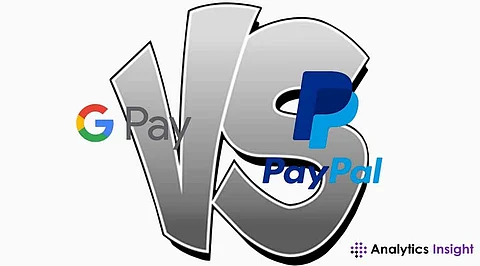

In 2025, digital payment continues to dominate the global economy, with PayPal and Google Pay at the forefront. Though they cater to different markets and needs, both systems seek to simplify transactions. To help you choose the best system for your needs, this article compares Google Pay vs PayPal in terms of their worldwide reach, transaction costs, security, user experience, and merchant assistance.
PayPal boasts an immense global coverage, serving more than 200 countries and accommodating 25+ currencies. It’s also very much accepted by foreign merchants, making it the ideal choice for making global payments. Whether you are shopping abroad or sending money to your loved ones around the globe, PayPal is ready to cater to those demands.
In contrast, Google Pay’s compatibility with the Unified Payments Interface (UPI) makes it the most robust in India. It focuses on internal Indian transactions, where UPI has revolutionised digital payments, despite being accessible in 94 countries. Google Pay offers a more specialised and cost-effective option for companies primarily operating in India.
Transaction charges are a major consideration while selecting a payment platform, and they are widely different for Google Pay and PayPal.
Google Pay provides feeless UPI-based domestic transactions, a major plus for Indian users. For credit card payments, though, Google Pay imposes a nominal 1.5 percent charge, so it is an affordable choice for occasional credit card payment users.
PayPal, however, charges a fee of approximately 2 percent for domestic payments through credit or debit card in India. For international transactions, the charge is higher, beginning at 4.4 percent plus a fixed fee of US$0.30, depending on the currency. These charges add up fast, especially for international transfers, and make PayPal a more costly option than Google Pay for domestic use.
Both sites value security, but in different ways to provide secure transactions.
The reputation of PayPal stems from its excellent fraud protection and buyer protection systems. When a transaction goes south, a buyer can always seek recourse, something that is especially advantageous in e-commerce. The encryption methods protect financial data, while international presence offers security features.
Google Pay also provides a secure means of transactions through tokenisation, biometric identification (fingerprint or face), and encryption. The integration with UPI gives a huge degree of security for domestic payments in India, and the security infrastructure from Google gives one more layer of trust.
Google Pay is unique for its smooth integration with the Google ecosystem, where users can pay using Android devices, Gmail, and Google Assistant. Its simple interface makes peer-to-peer payments, bill payments, and mobile payments easy. Tap and Pay using RuPay would make payment methods simple in brick-and-mortar establishments, and with its UPI Circle, make shared payments with family or friends.
But PayPal has a very simple and user-friendly interface with add-ons for online bill and shopping services. Recently, the introduction of the new debit card has hike in-store shopping using PayPal. Thus, it proves that PayPal is going to become a ubiquitous payment platform for both online and offline payments.
PayPal is recognised by all merchants across the world, especially in online shopping. It’s used in sites like Shopify, Etsy, and eBay; hence, it acts as an international payment processor for companies and independent workers. Its established presence in the international market enjoyed a wider range of merchant acceptance.
Google Pay is growing, but it is more useful for payments made inside India. Google Pay has UPI online payments, QR codes, and real-time payments in stores, but it does not even come close to having the global merchant network that PayPal has. Yet, its increasing popularity among local retailers and merchants in India can make Google Pay a significant competitor in its local market.
If you mainly need a payment solution for local transactions in India, Google Pay is a pretty nice solution- its low-cost transactions and excellent UPI integration are an added benefit. It is particularly well-suited for individuals looking for a bare-bones payment solution locally, preferably one with very low fees.
PayPal is preferred for international transactions, e-commerce, or cross-border payments. With a large global reach, high security, and merchant assistance, PayPal is still the king of the global digital payment platform.
At the end of the day, Google Pay or PayPal will depend on the context and manner of your intended use of the platform. Each has its unique advantages, so weigh your own needs before deciding on this ever-evolving arena of digital payment.
